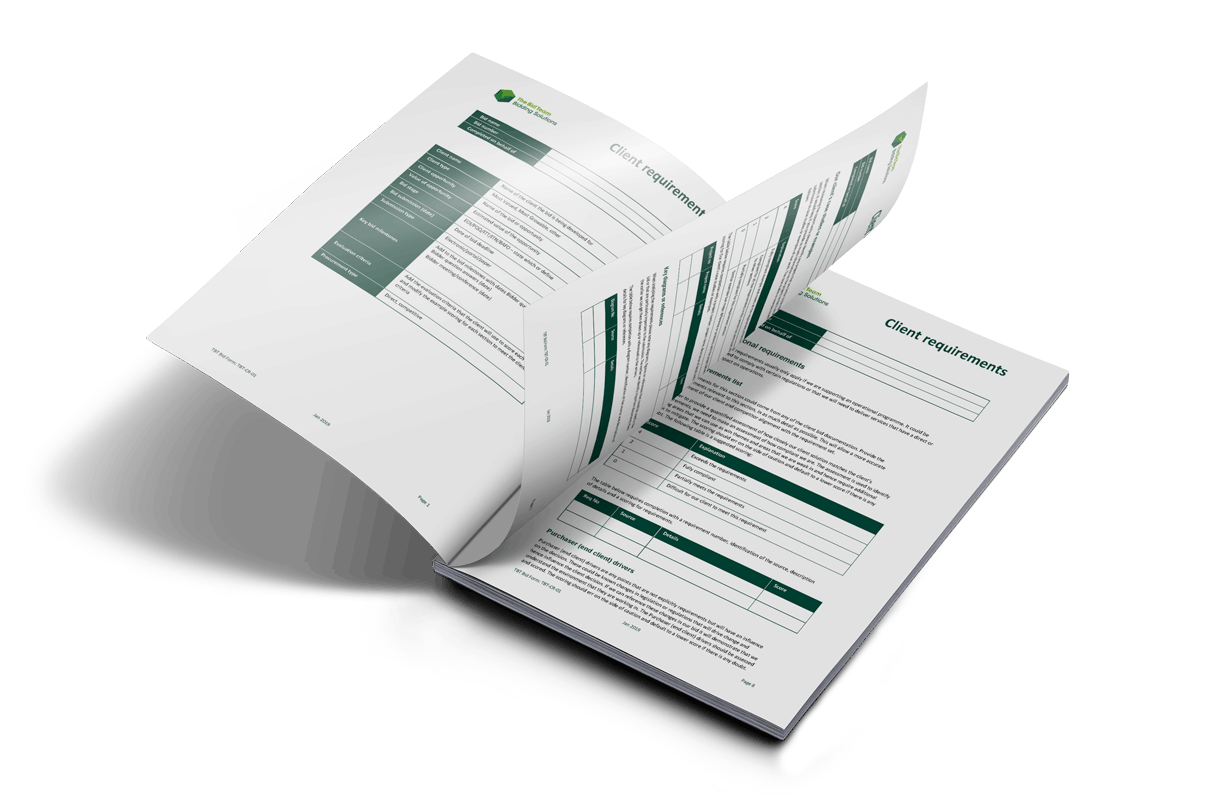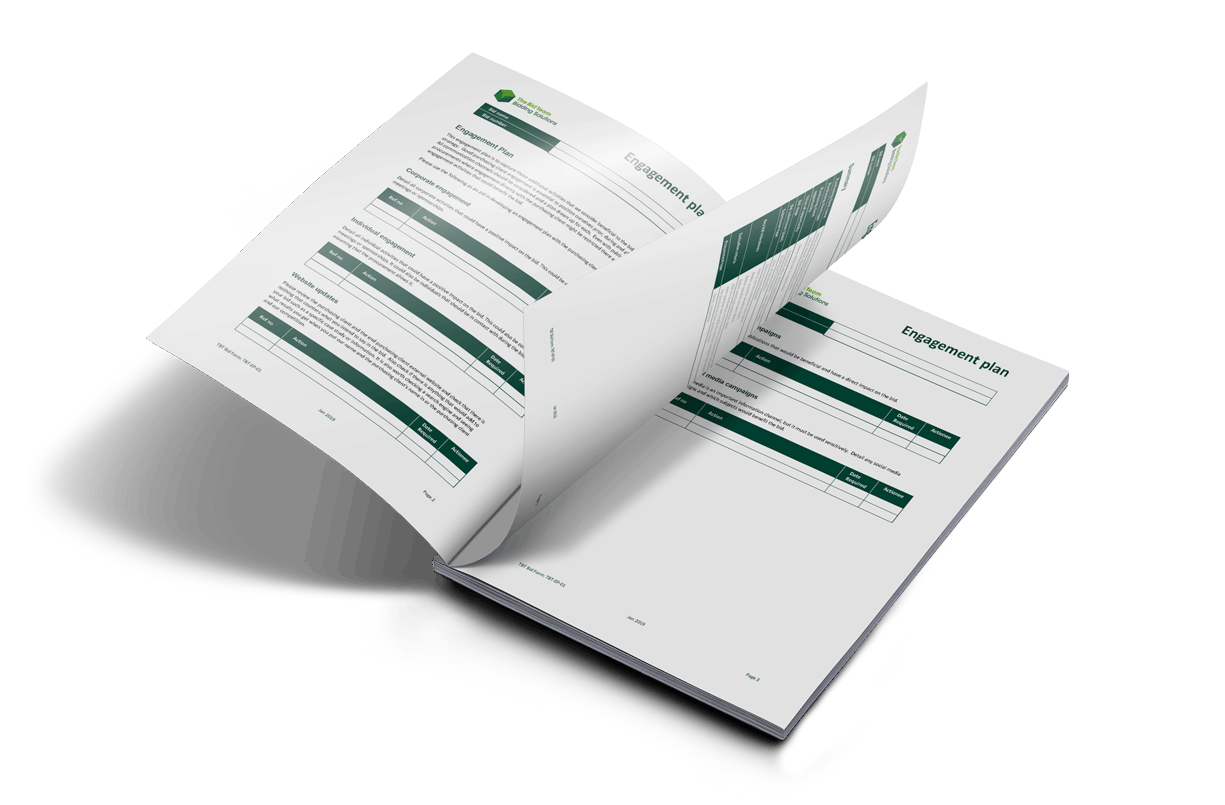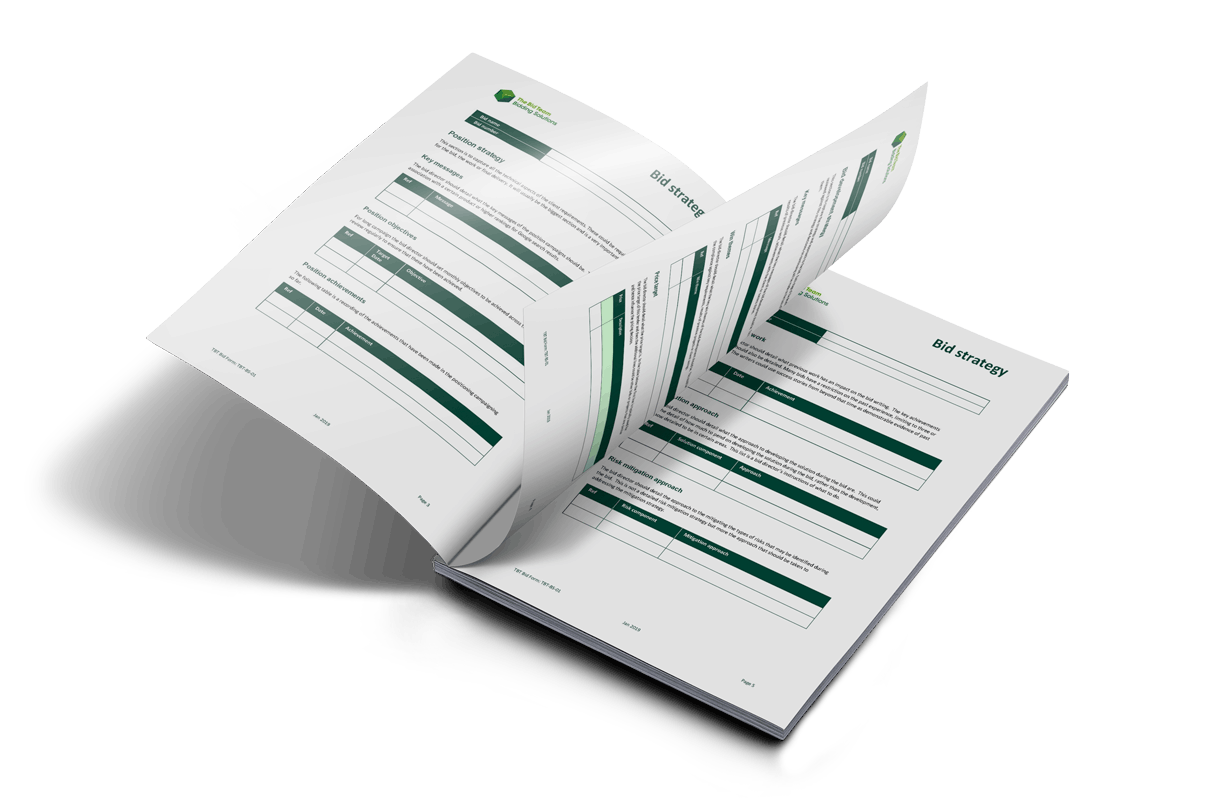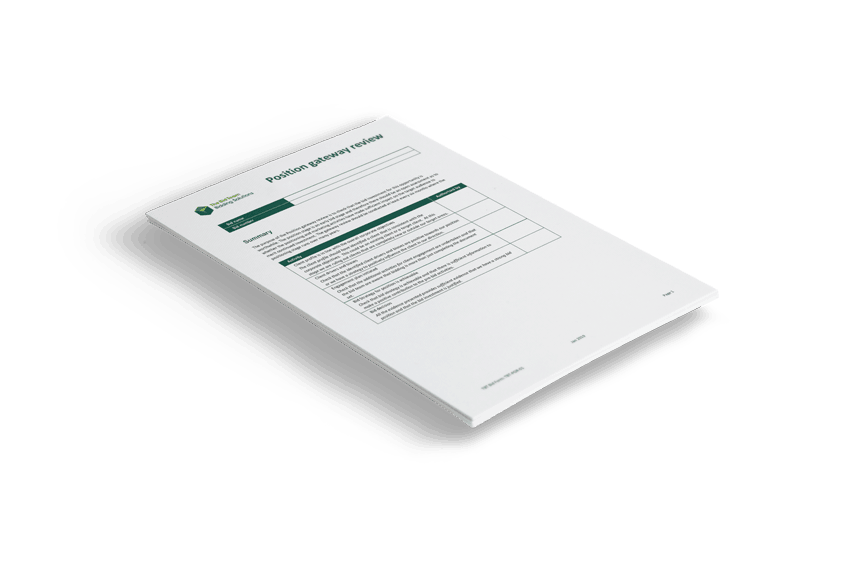 Position
Position
The Bid Team can assist in helping position a bid so that you have used all possible communication channels to ensure you are in a position to win.
Winning a bid starts well before the purchasing organisation issues the bid. The positioning of a bid can start months or even years before the tender is issued. The Bid Team has produced a series of guides to help companies navigate through the bid process and win the bid.

Assessing client requirements and your compliance to them is essential in determining your likelihood of winning a bid. The Bid Team has developed a client analysis methodology that takes you through the client requirements analysis and apply a scoring mechanism which will then allow you to determine your position against the competition.


Assessing client requirements and your compliance to them is essential in determining your likelihood of winning a bid. The Bid Team has developed a client analysis methodology that takes you through the client requirements analysis and apply a scoring mechanism which will then allow you to determine your position against the competition.
Winning a bid is much more than completing the client documentation. It should include a full communication strategy across all media channels. The Bid Team’s communication strategy proforma ensures that all communication channels are considered and an implementation plan put in place that will have a positive contribution to your bid.

All contributors to a bid should have a clear view as to the bid strategy, what key messages and win themes are to be communicated, and what the approaches are to solution development and risk management. The Bid Team’s bid strategy proforma ensures that these are available to all contributors in a consistent and understandable form.


All contributors to a bid should have a clear view as to the bid strategy, what key messages and win themes are to be communicated, and what the approaches are to solution development and risk management. The Bid Team’s bid strategy proforma ensures that these are available to all contributors in a consistent and understandable form.
At each stage of the bid process there should be a reassessment of the likelihood of wining the bid. As the bid develops, more information becomes available and the likelihood of winning will change. The Bid Team has developed a series of gateway reviews that sign off the continued investment in the bid. After passing this gateway the process moves to the strategy stage of the bid.

The Bid Team can assist in helping position a bid so that you have used all possible communication channels to ensure you are in a position to win.
Here’s a bit more information on the bid positioning process for your guidance:
Many companies wait for a bid opportunity to be presented to them and then undertake a reactive series of activities to respond to the bid. This usually means that the bid is rushed, and the right resources have long term commitments that impact company revenue and hence are not available to bid. Therefore, the bid is undertaken with little time available and resources that are new to bidding or new to the activities asked of them. It is hardly surprising that these bids usually fail. This failure has two impacts first on the win rate but more importantly on the moral of the bidding teams. People become less willing to participate in bids and this further impacts the win rate. Wouldn’t it be better to not be reactive to a tender but to be in control of the bid timetable, bid content and evaluation criteria? Ok, so perhaps control was a too strong an aspiration, but it would be better to have some influence in what our potential clients are asking for. Companies that work toward positioning themselves have such influence and usually win the bids. As such, it is important to carry out this stage effectively and correctly. This article will explain the details of the positioning stage of the bid process.
Positioning a bid takes place long before the purchasing organisation has even issued the bid. This stage could take place months, or even years before the tender is issued, depending on the value. This does mean that the bid is a known entity and you know that it is going to be issued, but surprise opportunities to bid should really be a no bid as somebody has positioned themselves and you are the market test by which they will be evaluated. Most tenders have a timetable and purchasing organisations know when the expiry date of existing contracts is due. If this purchasing client is a target client, then your sales teams should be able to get the information on what bids are coming out over the next months and years. If they can’t then it is your sales strategy that needs work before you address your bidding strategy. Public sector purchasers publish award and renewal dates for all expenditure over the threshold. So all public sector information is available and can be used to plan your positioning strategy. In effect the positioning for a bid should start as soon as you have won/lost a bid or are aware of the likely opportunity. Obviously, the effort will intensify as the bid date gets closer, but you should be influencing from the earliest date.
The positioning period should be an opportunity to influence what the bid is about and an opportunity to shape the client’s articulation of the problem to reflect your solutions. An incumbent should use the positioning stage to gather evidence to prove that the objectives of the bid have been met or superseded during their time handling the project. A challenger should use this stage to concentrate on the client advantages of your solution to your service in comparison to the incumbent. The purchasing organisation will already be aware of the advantages that the incumbent provides, but unaware of the ones provided by you. Use this stage to identify these advantages.
Positioning should also include a communication strategy that spans all media channels. While your sales teams should be the main driver in getting the message to your target client, other media channels can have an influence. The pre bid preparation should align the key win themes you have identified with unique selling points. This should then be communicated through various media channels such as your social media, printed media, website and marketing literature. This ensures that all communication channels are considered and that an implementation plan is put in place.
The take away from this article is that if you have a surprise tender that you are asked to respond to – don’t waste your investment. Plan the bids that you want to participate in, target your marketing and sales team to the bids you plan to win and influence their articulation to your solution. It is only if you have had a hand in the request for proposals do you know that your relationship with a target client is excellent. Only bid when you have an excellent position.
Contact Us Now
To enquire about any of our services please fill out the contact form below and we will be in touch.